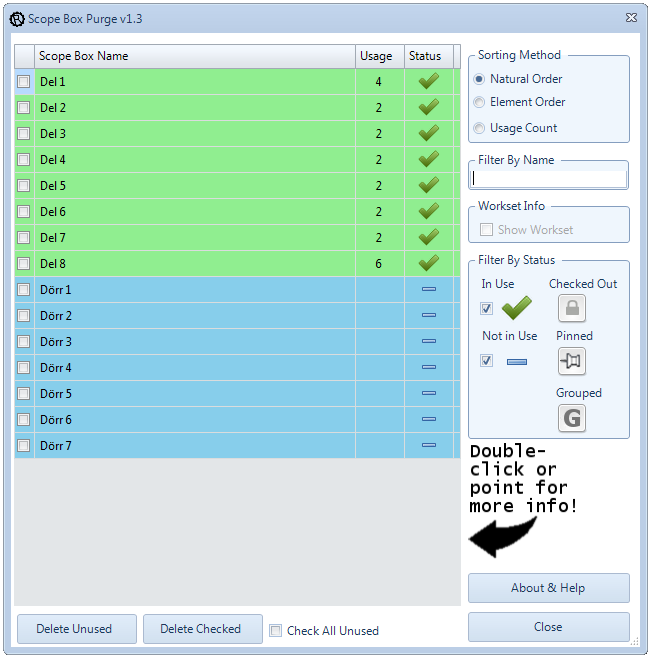
The bottom line answer is: A scope box cannot be used to control the extent of visibility in a 3-d view. Steve posted this a while ago That was fast. I figured it out but, still wonder at the fact that this program wich cost thousands of dollars comes with less printed documentation than a 50 dollar DVD player.
Scopebox for pc how to#
It says that scope boxes can be set to be visible in elevation views but fails to tell you how to do it. Any expert out there care to post a "care and feeding of scope boxes" outline? As usual the Revit help doesn't help much. Scope Boxes and Plan Regionsĭo you have a method of doing that Abe? I've never used scope boxes either. Haven't seen them used to define crop regions or control visibility of model elements. Seldom use them, but scope boxes are just for controlling visibility of datum lines, i. They aren't actually cutting a section just using a region to define an envelope that governs the elements visibility. If I misunderstand, someone please correct me! If I am right, then maybe I'll put it to the wish list? Haven't used them much but my understanding of scope boxes is that they don't define the view, they just define the extent of the elements visible within the view. But if I create a scope box, why can't I apply that to a 3-d view? Now, I know the purpose of a section box, if I want to use it. Can anyone tell me why, if you create a scope box in a plan view, you can use that box to essentially define your crop region in plans, elevations, etc.īut in a default 3-d view then you need to create a section box? It seems that you cannot use the scope box in a default 3-d view and need to create a redundant section box. of 2 1 2 Last Jump to page: Results 1 to 10 of Thread: Scope Box vs Section Box. Building and Architectural Design How to copy your Steel connections to other steel members. Now set the brush size larger and colour the outside of the outlines black. So open MS Paint that comes with Windows. The next step is to browse to the picture you want to add as a decal. Dec 14, The process below describes how to create a non-rectangular decal image in Revit as below: Open a Revit project and zoom into a wall that you are adding the decal to. Once done Save and you can use this image as a Cutout in Revit. You can Zoom in to colour in more accurately. Do this until you have a monochrome image. Now click the Pencil tool and trace over the outlines of your image. Save the file as PenguinCutout or similar name. Now to discuss how to create the Cutout image.



Once you clicked ok the Cut out will be applied and your decal will become non rectangular. Now the idea is to have a non rectangular image and the way to do this is to add a Cutout to the decal. If you click ok this will add the decal as a rectangular image once you use the Insert Place Decal tool and place the decal on the wall. Then switch the Visual style to Realistic as shown below. Removes any split applied to the view's crop.Open a Revit project and zoom into a wall that you are adding the decal to. Removes any non-rectangular boundary of the view's crop. Serves as a hash function for a particular type.

Gets the crop boundaries that are curently active. Gets the annotation crop box assigned to the view. The offset from the top of the view crop that determines the location of the annotation crop top boundary. The offset from the right of the view crop that determines the location of the annotation crop right boundary. The number of split crop regions 1 if the crop is not currently split. The offset from the left of the view crop that determines the location of the annotation crop left boundary. Whether or not the view's crop is split and the split is vertical. Whether or not the view's crop is split and the split is horizontal. Verifies that the crop of the associated view is permitted to have a non-rectangular shape. Verifies that the crop of the associated view is permitted to have multiple regions. Name Description BottomAnnotationCropOffset The offset from the bottom of the view crop that determines the location of the annotation crop bottom boundary. Verifies that boundary represents one closed curve loop without self-intersections, consisting of non-zero length straight lines in a plane parallel to the view plane. Returns the proportional location of the minimum boundary of the specified split crop region. Returns the proportional location of the maximum boundary of the specified split crop region. Determines whether the specified Object is equal to the current Object.


 0 kommentar(er)
0 kommentar(er)
